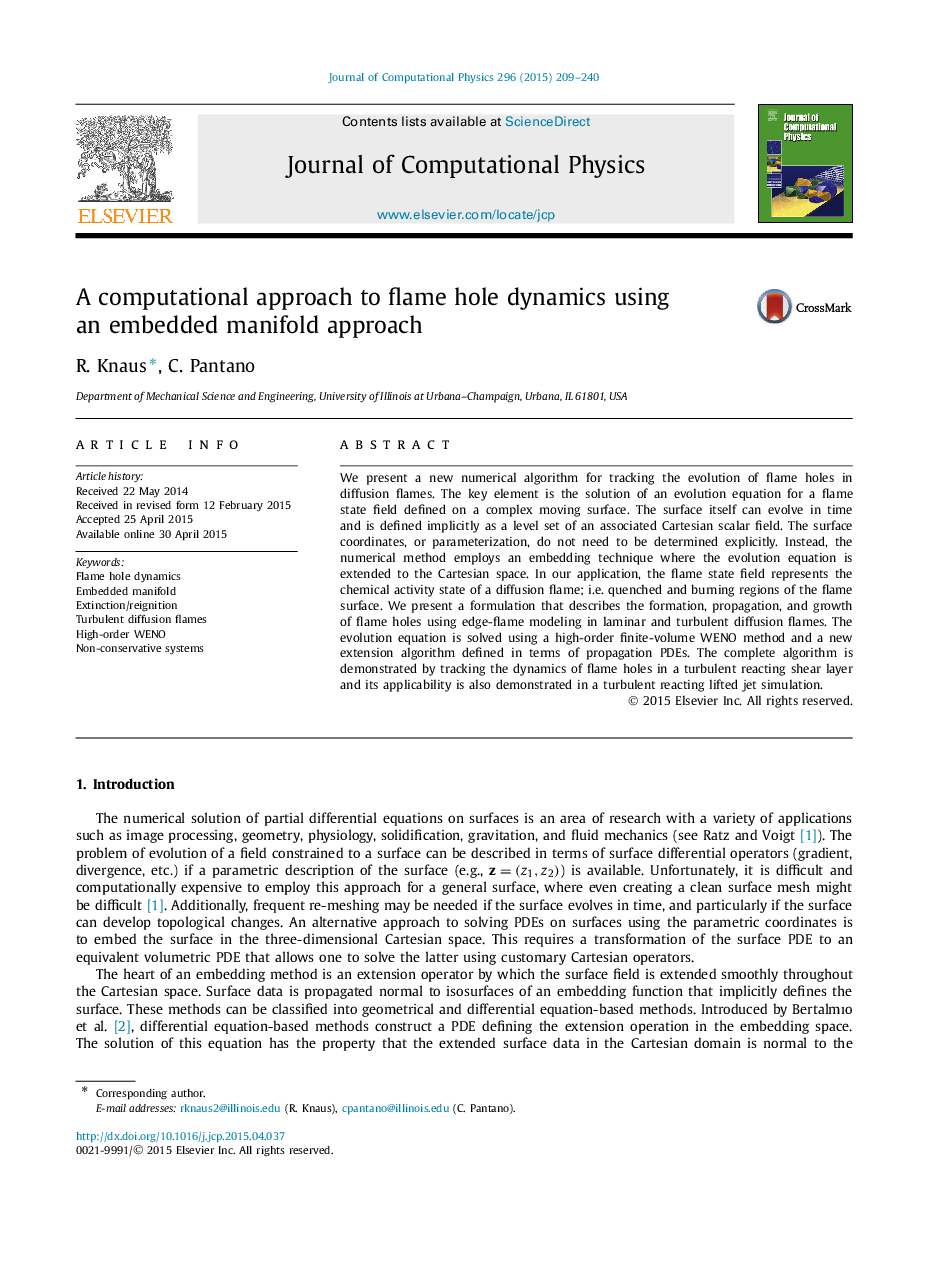| Article ID | Journal | Published Year | Pages | File Type |
|---|---|---|---|---|
| 519632 | Journal of Computational Physics | 2015 | 32 Pages |
We present a new numerical algorithm for tracking the evolution of flame holes in diffusion flames. The key element is the solution of an evolution equation for a flame state field defined on a complex moving surface. The surface itself can evolve in time and is defined implicitly as a level set of an associated Cartesian scalar field. The surface coordinates, or parameterization, do not need to be determined explicitly. Instead, the numerical method employs an embedding technique where the evolution equation is extended to the Cartesian space. In our application, the flame state field represents the chemical activity state of a diffusion flame; i.e. quenched and burning regions of the flame surface. We present a formulation that describes the formation, propagation, and growth of flame holes using edge-flame modeling in laminar and turbulent diffusion flames. The evolution equation is solved using a high-order finite-volume WENO method and a new extension algorithm defined in terms of propagation PDEs. The complete algorithm is demonstrated by tracking the dynamics of flame holes in a turbulent reacting shear layer and its applicability is also demonstrated in a turbulent reacting lifted jet simulation.
